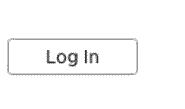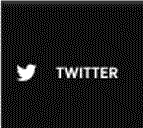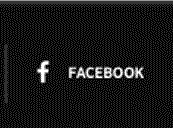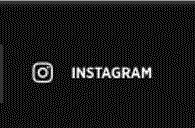



What Do the 2020s Hold? A Futurist, a Trend Forecaster, and an Astrologer Predictby Michelle Ruiz A new decade is upon us and the world is practically begging for the roaring prosperity and jazz hands of the 1920s.But if the 2010s were the all-digital-everything, iPhone, and Instagram era, what will the 2020s hold? Never fear: According to a futurist, a trend forecaster, and an astrologer, there will be a flood of much-needed optimism—including a new Age of Aquarius and the rise of magic mushrooms! Oh, and soon enough, we’ll all be paying for groceries with the wave of a finger and reading the internet through our smart glasses. Read on for a promising peek at the next decade. Emma Chiu, global director at Wunderman Thompson Intelligence, trend forecasting firmThe turn of the decade has given us a lot to reflect on. The 2010s was filled with a lot of instability and uncertainty when it comes to politics, economics, and the environment. It was a very unsettling decade grounded in a lot of anxiety. The 2020s are moving towards bit more of a respite, something that’s more optimistic. Definitely in the past years, there was an uptick in creating dystopian landscapes in art and culture, which people really identified with. (Think The Handmaid’s Tale.) But in the 2020s, we’re seeing a lot of art, artists, and events channeling something that’s far more positive. They’re creating what we’re calling alternative realities where we’re defying time, space, matter: Burning Man’s theme for this year is the Multiverse. We’ve covered in past years the uptick in cannabis use, and now we’re looking at magic mushrooms becoming the new cannabis. We’re calling it psychedelic health. Psychedelic drugs are coming to the foreground—on one hand being used for health reasons, but on the other hand unleashing a different side of imagination. Denver, Colorado and Oakland, California, have decriminalized the possession of magic mushrooms. One company that’s experimenting with this sort of psychedelic experience without the drugs is called Waypast; it’s using light, space, and music to create this transformative experience. It’s the next level of meditation—tapping into something that’s far deeper. Over the last decade, we were seeing people being far more vigilant when it comes to measuring their own metrics about their health. The next data measurement we will see coming about is carbon footprint, people wanting to understand how they’re behaving. The need for convenience in e-commerce isn’t going anywhere, especially this on-demand this way of consuming (i.e., Amazon). However, I think there’s going to be a breaking point when it comes to people’s need for convenience and people’s ethical needs: Yes, I want something fast, but what does that mean in terms of the carbon footprint? There was quite a cool credit card that we covered called New Economy. Basically, it’s a credit card that measures your carbon footprint, so when you go over the limit of your carbon footprint, the card stops you from being able to use it further for that month. When it comes to payments, we’re moving towards checking out in a frictionless way. Hand gestures—scanning your payments with a wave of a hand—is being trialed in certain Whole Foods. It’s similar to how we use our thumbprints or facial recognition, but it’s with hand recognition, so people don’t need to physically touch the device. You don’t need any extra things in terms of a card or a phone. It’s just you. The person becoming the new form of credit card. Marc Palatucci, futurist at the Future Today InstituteOne of the things we at FTI think is going to come into play in a big way in the next decade is smart eyewear. If you look at 2010, the iPhone was just a couple of years old, but mobile was starting to take off in a new way. We really saw internet use shift from desktop and laptop screens to our pockets and our handheld devices. But we think there is most likely going to be a further shift from the screens in our pockets and in our hands to right in front of our faces, right in our field of vision. People think immediately of Google Glass, which was by and large a failure. It was not accepted into society. People were put off by potential invasion of privacy. If you saw somebody wearing Google Glass, it was like, “Are they recording me?” The technology was a little bit ahead of its time. Now, the big players in tech are almost all working on new iterations of smart eyewear that should be launching in the next couple of years. It would be something akin to a Google Glass that’s more used for augmented reality versus virtual reality. Augmented reality lets you see the world around you, but then can overlay that physical world with digital elements. It allows you to roam freely and wear it and experience the internet or digital elements while on the move. Theoretically, you could have a screen with text or images appearing in your field of vision, like Instagram. If you want to post something to social media, you could dictate a post and see it typed out on this digital interface and have it posted. You could have Google Maps transposed to your glasses. It could be altering the appearance of your surroundings to better suit your aesthetic desires, let’s say. Your imagination can really run wild thinking about the ways that it will free us up, make our lives a bit more efficient. People complain a lot about how everybody’s looking down at their phones and [are asking,] “What has happened to society?” Well, we wouldn’t need to be looking down anymore. But there’s always going to be a flip side to that coin. Privacy is definitely going to be [at the] top of the list of potential risks with smart eyewear. There’s going to be a sense that wherever we go, we may potentially be recorded by a bystander. But, frankly, when you think about it, with more and more stoops and doorways having a Ring doorbell with a camera on it or with people just discreetly using their phones…one of the things we’ll have to accept is that our data is not a tangible, securable thing in any sort of completely satisfying way. Everywhere we go in our lives and even in our own homes, we’re shedding data, and that data can be captured by different companies or other individuals. Once we come to this level of acceptance, there could actually be an empowering element, where we’re simply more aware of our behaviors, our actions, our words, our image. Susan Miller, astrologerAstrologically, the new decade really doesn’t start until the end of this year, on December 21. Every 20 years, Saturn and Jupiter meet. I have learned they’re happy to see each other. They set the tone for the coming 20 years, for culture, for fashion, for government, for literature, for the pace of our days, and our focus. Jupiter and Saturn are important because they’re in the middle of the solar system. For the past 200 years, they’ve always met in earth signs. It was Taurus, and Virgo, and Capricorn. This year, we have a name for it— astrologers always call everything terrible names—it’s called the Grand Mutation. It sounds like the Ebola virus, but it’s not. That’s when there’s a change in element. Saturn and Jupiter are going into air [signs]. They’re aligning in Aquarius. It has a pretty huge effect on civilization. The past 200 years, we saw the assembly line, the booming of manufacturing, and the industrial age. These are all earthy things, things you can buy, see, and touch. Now, when we move into the next 20 years where Aquarius is going to dominate, it will be the real flowering of the Age of Aquarius, like the 1960s—flower power children. It’s a lighter influence, a nonmaterialistic sign. What I’m really excited about is Aquarius likes to work in groups. To tackle big problems, like the environment, people will work across nations. It will no longer be, “Well, the United States against France, against Germany, against China.” No. These countries will work together in teams to tackle big problems that affect us all. Are the robots coming? Yes. But also, some very wonderful things with medicine. Saturn, right now, is in Capricorn. Whenever you get a lot of Capricorn planets, you always get a conservative wind blowing through the world. You see it with Brexit, you see it here. In the late ’80s and early ’90s, there were a lot of planets in Capricorn. We had George Bush as president, and Ronald Reagan. We did in 2016, and Mr. Trump got in. With the next election, it’s sort of half and half, so it’s way too early to call. It’s not destiny. People say, “Who’s going to win?” I have no idea. We have to vote. In 1982, Saturn and Jupiter met in an air sign. For the next 20 years, they were in air. Babies born in those years, from 1982 to 2000, those babies are going to lead the brigade into the future. https://www.vogue.com/article/what-do-2020s-hold-predictions-new-decade
|





